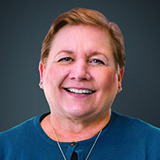This second issue of Conquering the Cancer Care Continuum™ focuses on the serious nature of the problems associated with access to care. Whether it be access to cancer screening, diagnosis, treatment, or follow-up care, it is an issue that remains unresolved. Some models aimed at early detection, such as the Centers for Disease Control and Prevention’s National Breast and Cervical Cancer Early Detection Program, have been successful in reaching some individuals. Difficulty still remains, however, in screening certain populations and arranging for them to receive treatment.
This publication contains articles written from the perspectives of a clinical oncology pharmacist and an oncology nurse practitioner. Both of these healthcare professionals provide their insight into the underlying causes of disparities in access to care, as well as the additional challenges associated with ensuring that a patient is receiving quality care.
We know that healthcare disparities in the United States continue to exist. Historically, these gaps were associated with low socioeconomic status and/or low educational levels. The lack of health insurance has been an issue as well, resulting in delayed diagnoses and higher mortality rates once an individual is diagnosed with cancer. Today, the circumstances that impact access to care have broadened. Although lack of insurance was identified by the Agency for Healthcare Research and Quality as the most significant contributing factor to gaps in access to care, we also must consider the escalating costs in cancer care. With medications and drug development being more expensive now than in the past, insurance companies are being forced to pass along more healthcare expenses to the patient, which are, in turn, associated with high copayments, higher deductibles, and even capitation for some episodes of cancer care. This means that having health insurance no longer completely solves the problem of access to care.
So, how do we wrap our arms around the rising costs of cancer care? One way is to utilize oncology nurses in a more expansive way. As the shortage of oncology specialists grows, along with a prexisting shortage of primary care physicians, we need to turn to nurses to fill in some of the gaps, as well as serve as bridges for continuity of care. Oncology pharmacists are serving in advocacy roles, thus helping patients obtain free or discounted drugs directly from the pharmaceutical companies. This service is needed not only by the indigent, but by working families as well. Although the development of new drugs is exciting, the costs associated with these agents are higher than we have ever witnessed before. Patients and their families do not and will not have the financial means to absorb the costs of cancer care that now rest on their shoulders.
Add to this equation the fact that the American Society of Clinical Oncologists is encouraging oncologists to expand their discussion with cancer patients about treatment options by not limiting the conversation to the risks and benefits of each potential therapeutic option, but providing patients with information on treatment costs as well. And when it comes to offering treatment to patients with advanced metastatic cancer, a priority among such individuals is not to leave their families with any financial debt associated with their cancer care after they are gone.
And what will happen to the patient who gets screened and, as a result, is diagnosed with cancer? We can no longer assume that this individual will proceed with the treatment of his or her disease. Some patients may feel that treatment is simply not possible for financial reasons, and will seek care that lacks evidence-based research and deviates greatly from standards of care. Patients may also feel that they cannot afford to take time off from work to get the treatment that they need.
To date, there is no one solution to this dilemma. We must work as a team to develop practical strategies to improve access to care, whether it be screening, prevention, early detection, diagnosis, treatment, or follow-up care. We need to become creative…to become truly innovative. We must also remember that treatment for treatment’s sake is not necessarily good quality of care. The healthcare system has rewarded physicians and hospitals for providing more and more treatment. Now is the time to step back and remember the Hippocratic Oath—“First, do no harm.” To create accessible quality cancer care in different environments, such as the workplace. To shift treatment hours to when patients are available to receive their therapy, which is often not in the middle of their workday. To promote healthier lifestyles so we can decrease cancer risk. There is a lot to be done. We need to work together to develop solutions sooner, rather than later.




